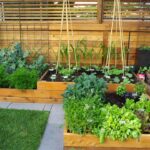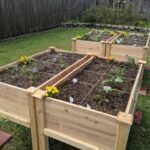Gardening has become an increasingly popular hobby, and for good reason. Not only does it provide a sense of accomplishment and satisfaction, but it also allows individuals to grow their own fresh fruits and vegetables right in their own backyard. Creating a backyard vegetable garden is not only a rewarding experience but also a great way to save money and enjoy the benefits of fresh, home-grown produce.
When planning a backyard vegetable garden, it’s important to consider the size and layout of your space. Raised beds are a great option for smaller yards or areas with poor soil quality. They allow for better drainage and can be easier to maintain. Container gardening is another option for those with limited space, as it allows you to grow vegetables in pots or other containers on a patio or balcony.
Choosing the right vegetables for your garden is crucial for success. Consider the climate and weather in your area, as well as the amount of sunlight your garden receives. Some vegetables, such as tomatoes, peppers, and cucumbers, require a lot of sunlight, while others, like lettuce and spinach, can thrive in shadier areas. It’s also important to consider the spacing and companion planting of your vegetables to ensure they have enough room to grow and thrive.
Adding vertical gardening elements to your backyard vegetable garden can help maximize space and increase your overall yield. Trellises, arbors, and cages can be used to support vining plants like beans, peas, and cucumbers, allowing them to grow upwards instead of sprawling out on the ground. Vertical gardening can also help improve air circulation and reduce the risk of pests and diseases.
Incorporating companion planting into your backyard vegetable garden can help improve the health and productivity of your plants. Certain vegetables, herbs, and flowers have natural repellent properties that can help deter pests and attract beneficial insects. For example, planting marigolds near tomatoes can help repel nematodes, while planting basil near tomatoes can help improve their flavor and production.
Lastly, don’t forget to add a personal touch to your backyard vegetable garden by incorporating decorative elements like garden art, pathways, and seating areas. Creating a welcoming and relaxing space will not only enhance the beauty of your garden but also provide a peaceful retreat for you to enjoy your hard work and fresh, home-grown produce. With some careful planning and creativity, you can create a backyard vegetable garden that is both productive and beautiful.

















